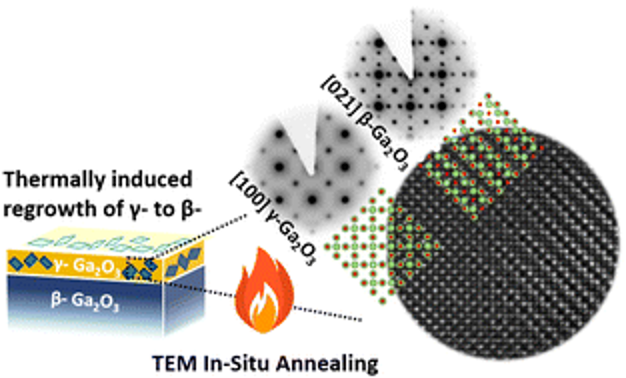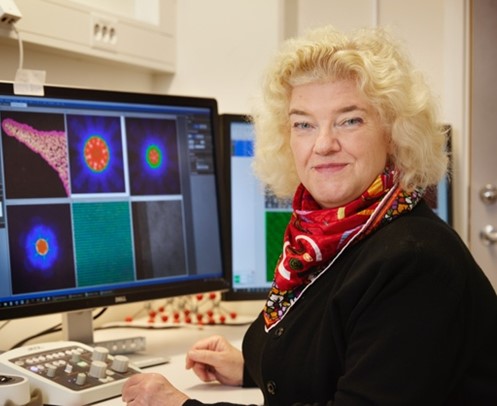
In situ atomic-resolution study of phase transformation in Ga2O3
Disorder-order phase transformation is a foundamental research question in material science. It is also crucial for the application of a range of technologically important materials, including Ga2O3, which is utilized in power electronics and UV photonics. Understanding the atomic scale mechanism of phase transformation is of critical importance for optimizing the material stablility and performance.
In situ heating TEM measurements were performed on Ga2O3 thin films pre-treated by ion implantation. The onset temprature of a 𝛾-to-𝛽 phase transformation is found to be around 300°C, leading to a prominent 𝛾 and 𝛽 mixture at 500 °C. The lattice alighments between the 𝛾 and 𝛽 polymorphs are maintained as a the temperature changes – with a reduction in the volumetric ratio of 𝛾 -domains for increasing annealing temperature. Finally, at 1100 °C, 𝛾 -Ga2O3 is fully transformed into 𝛽 -Ga2O3.
Preparation and transfer of TEM specimens onto the microelectromechanical system (MEMS) device used for in situ TEM is an important step that enables the in situ TEM studies. This step was performed using a focus ion beam – scanning electron microscope (FIB-SEM).
This work was partly performed at the Chalmers node of ARTEMI via a user access project by Javier Garcia Fernandez, Anuj Pokle, Phuong Dan Nguyen and Øystein Prytz from University of Oslo, together with Lunjie Zeng and Eva Olsson from Chalmers University of Technology.
Publication: Materials Advances 5, 3824 (2024).






